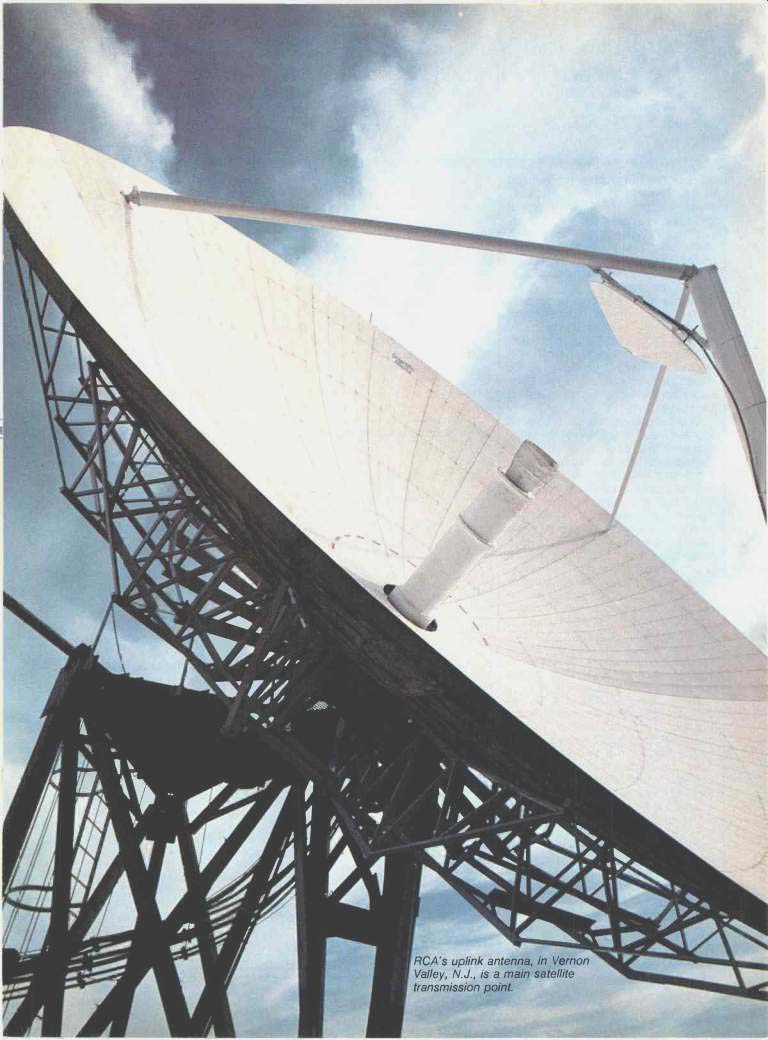
above: RCA's uplink antenna, in Verson Valley, N.J., is a main satellite transmission point.
by RICH WARREN and DANIEL QUEEN
[Rich Warren, a staff producer at WFMT, writes the audio column for the monthly magazine Chicago and a nationally syndicated column on audio. Daniel Queen is acoustical consultant to WFMT and heads Daniel Queen Associates, an acoustical consulting firm in Chicago].
What can you hear in Kodiak, Key West and Chicago that you can't in New York? The answer is WFMT, Chicago, widely considered the nation's best FM station.
The station's nationwide coverage has nothing to do with its transmitter power. It's due, instead, to United Video (UVI), the company that transmits WFMT's signal to more than 126 cable companies, in 36 states, via an RCA Satcom communications satellite. That satellite link made WFMT the country's first radio superstation-except to Chicago listeners, to whom it's been a superstation all the time.
The WFMT Difference
WFMT is in its 31st year of broad casting a "fine arts" format of classical music supplemented by drama, poetry, discussion (it's the home of Studs Terkel), and folk music. The station re cords and syndicates programs by the Chicago Symphony Orchestra, the Milwaukee Symphony Orchestra, and Chicago's Lyric Opera; the Lyric's opening nights are broadcast live.
WFMT accepts a limited amount of commercial advertising, but refuses prerecorded commercials and jingles, a unique policy in commercial broad casting. A piece of music is never interrupted except for a news bulletin. Contrary to the expectations of radio pundits, the policy has paid off handsomely in listener loyalty and profitability. The station proudly possesses numerous Armstrong, Peabody and Ohio State programming awards, as well as a number of commendations for technical quality from engineering journals, the popular press and audio equipment manufacturers.
Less obvious than its programming, but equally audible to listeners, is WFMT's unparalleled technical quality. Broadcasting from the John Hancock Center in Chicago, with an antenna height of 1,175 feet, WFMT uses an RCA BTF-20E-1 transmitter and a two-bay, circularly polarized Alford Engineering antenna, for an effective radiated power (ERP) of 15.5 kilowatts. The Harris MS-15 exciter and stereo generator were custom modified and built for WFMT by Harris, guaranteeing a signal-to-noise ratio (referenced to 100% modulation) of better than 82 dB.
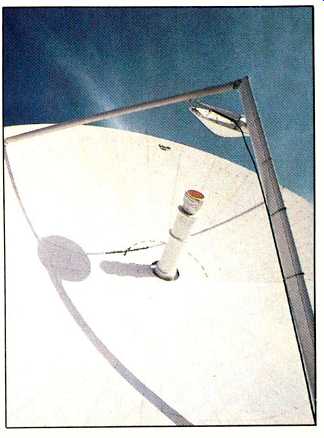
Since FCC regulations forbid over-modulation, and conventional limiting is anathema to classical-music lovers, an integral part of the transmitter system is a modulation controller de signed and built by WFMT's Chief Engineer, Alfred Antlitz. Dubbed Moduplex I, the device's several detectors continuously analyze the input and apply multiple corrections to it. This "smart" device avoids the audible pit falls common in broadcast limiters.
"The purpose of the Moduplex I is to avoid overmodulation, with a minimum of side-effects-more difficult with the wide dynamic range of classical mu sic," says Antlitz, "than with other mu sic which has already been processed." Its multiple corrections are applied in a hierarchy, "because these corrections are beneficial in some circumstances but detrimental in others.
"For example, high-frequency transients (such as record clicks) are simply clipped, because that's the least objectionable correction. When the peak lasts too long, or it is too low in frequency to be clipped inaudibly, a peak limiter (which reads the pre-emphasized signal) lowers the system gain at a carefully timed rate, then restores it. The peak limiter and clipper prevent overmodulation, and the peak limiter also keeps the clipping below audibility.
"To keep the peak limiter's action from being heard, Moduplex also has a broadband limiter section. It's deliberately sluggish, to keep its own action as inaudible as possible. It also limits to well under 100% modulation, to leave headroom for the dynamics of the musical performance.
"A compressor stage performs a similar function to the broadband limiter, but over an even longer time frame. Both the broadband limiter and compressor are gated by changes in the music's level. If the loud passage is followed by a gradual decrescendo, the limiter and compressor gradually release. If it's followed by a sudden drop to a quiet passage or a pause in the music, these stages don't release immediately but do begin releasing, slowly and at separate times, several seconds later." All these stages work hierarchically, so that if the a.g.c. section of any stage is greater than or equal to that of the stage before, that previous stage stops processing. Moduplex reads the signal both after pre-emphasis (for peak limiting) and before it (for broadband limiting and compression), so it can compare the emphasized and non-emphasized signals and see how much high frequencies are contributing toward potential overmodulation. If necessary, and only after all the other stages have tackled the job, a final section will roll off these high frequencies, up to a maximum of 6 dB at 15kHz, and in lesser amounts at lower frequencies down to 5 kHz. This is used primarily to reduce the amount of peak limiting needed, since that is the most audible correction which Moduplex applies.
These are not actually separate corrections, applied by separate circuits, but a list of the ways in which a single circuit will apply correction, depending on the signal it has to deal with. De spite the system's intelligence and complexity, Antlitz takes pride in the fact that it's doing nothing to the signal most of the time.
The studios, about a mile from the Hancock Center, are connected to the transmitter by telephone lines having better than 95 dB of signal-to-noise ratio, and minimal phase error between the two channels. The John Hancock building, site of many transmitters besides WFMT's, is in line of sight with the station, bathing it in r.f. interference. The studio/control-room complex has therefore been completely shielded-enclosed in copper shielding, with telephone lines, power wires, plumbing and ventilation ducts electronically filtered to keep stray r.f. from degrading the S/N.
Perhaps the best examples of WFMT's commitment to advanced technology and audiophile sound are the mixing consoles, designed and built by Antlitz. Four of these are used, one in the main on-the-air control room and three in production control rooms.
There's provision for up to 23 input modules and three independently assignable stereo-program outputs. Digital logic and control are employed extensively throughout.
These transformerless consoles have summing, push-pull, balanced mixing busses which cancel out the effects of cable capacitance and crosstalk. This allows the use of ribbon cable with mass-terminated connections: " 'Plunk!' and you've made 50 connections in no time flat," says staff engineer Gordon Carter.
Signal switching is done by Siliconics solid-state analog switches, capable of handling signals up to 30 volts peak-to-peak. Analog switches can be interfaced directly to solid-state control logic, with no need for driver circuits.
The capacitance of analog switches can cause clicks when switching, but differential circuitry eliminates this common-mode problem.
Extensive use of voltage-controlled amplifiers (VCAs) gives the console low noise and extremely broad control range. "But the main point," says Carter, "is simple and versatile control." The console's faders do not carry audio signal, but merely the d.c. voltage controlling the VCA's gain. This allows control of both stereo channels by one monophonic fader for perfect tracking between channels, allows multiple channels to be linked for control by a single fader, and reduces noise.
Linking is not the only special function available. Custom circuitry be tween the linear faders and the logarithmic VCAs can reshape the control curve. This can be used for such purposes as pan-potting, with lowered control sensitivity at the center of the range, for smoother panning. The VCA design also switches softly, ramping the audio quickly up and down to eliminate the "clickiness" of instantaneous switching.
As the fader in each signal channel is brought down, it decreases the voltage to the VCA. When that voltage falls below the point where the VCA cuts off, logic circuitry trips the analog switches to remove that channel from the mixing buss, preventing any possible crosstalk and removing unnecessary noise sources from the buss.
These control features, and user-oriented design, make the console easy to use. "One reason we built our own," says Carter, "was human engineering. No commercial console was adequate. We copied ideas from everyone, because no one design had it all." The console was designed for sonic transparency as well. Its A-weighted noise floor is-103 dBm, and its maximum output is +27 dBm, for an over-load-to-noise ratio of 130 dB, with less than 0.0025% total harmonic distortion and no crosstalk.
The broadcast chain preceding the consoles includes Technics SP10 Mk II turntables with Signet XK50 tonearms, Shure V15 Type V cartridges and Apt/ Holman preamplifiers. Studer A8OR and B67 tape machines equipped with Dolby A are used for all tape recording and playback. Standard announce microphones include the AKG D202E and Shure SM81. Apt power amps drive B & W and Celestion monitor speakers, which seem to be the cur rent staff favorites, although KEF, Dahlquist, AR and Infinity speakers have their niches on the premises.
Control Room C, which operates the Music Performance Studio, also uses all Studer machines plus a recent addition, the Sony PCM-F1 digital processor. The nerve center is a Neotek Series Ill custom-built console, with a Lexicon 224 digital reverberation unit.
Neumann, AKG, Schoeps and Shure microphones are used for recording sessions and live broadcasts. The studio itself (see sidebar) is used for live, 90-minute classical concerts on Tues day nights. Many musicians have also recorded albums here, including folk singer Torn Paxton and Russian-born pianist Dmitry Paperno.
Gordon Carter designed and built advanced, solid-state monitor, inter corn, and switching systems. The monitor system uses parallel data address technique, controlling C-MOS analog switches that route signals and control levels between the three studios, three control rooms, three production control rooms, the shop and the equipment room. This monitor system can be con trolled from 14 locations, each of which can pick up any of eight stereo sources. It uses 124 balanced stereo cross-points and integrates muting, warning lights and telephone control. Eight-digit displays spell out which sources are being monitored.
The switching system gives any con sole access to any of eight stereo sources originating in that studio or control room, and 24 stereo sources originating elsewhere at WFMT or coming in as remote signals. The LCD readouts spell out which input is selected. Phase and channel reverse are also provided for. The tape/satellite facility room is hooked into this system, allowing any of its six open-reel and six cassette decks to record from any source in the system.
The 14-station intercom system, by comparison, looks simple. However, it has such niceties as lights to show who's calling and to show which stations cannot be reached because they're recording, they're on the air, or they're busy.
For remote recordings, WFMT uses a pair of Nagra IV-S portable recorders with Dolby A (now being supplanted by the Sony PCM-F1 digital system) and Studer 169 and 269 portable consoles.
WFMT's attention to audio quality led Sony to work with the station in presenting the world's first broadcast of the Philips/Sony compact digital disc system, on June 8, 1982. The broadcast got a positive response--not just from local listeners, but from one in Portland, Oregon, proclaiming that he could, indeed, hear the difference be tween analog and digital. That he could hear it was due not only to WFMT's audio quality but to that of the satellite link between the station and the Portland cable system.
The Satellite Connection
This combination of programming and technical excellence created a demand for WFMT outside its local cover age area, from migrating Chicagoans and those familiar with the station by reputation. Prior to 1979, WFMT was being carried on cable systems in Illinois, Indiana, Wisconsin, Michigan, Ohio and Iowa either off the air or by microwave link. With the advent of advanced communications satellites in the late 1970s, there were new horizons. United Video, Incorporated (UVI), created as a common-carrier microwave company in 1965, leased space on RCA's Satcom I in 1978 in order to sell cable systems video programming. UVI selected WGN in Chicago to become one of the nation's three TV superstations (the others being WTBS in Atlanta and KTVU in Oakland). WFMT's uniqueness and proximity to WGN-TV offered UVI an unexpected opportunity to supplement its video service at marginal extra cost. In May 1979, UVI selected WFMT to be the first radio superstation.
WGN and WFMT were originally received off the air north of Chicago and microwaved to RCA's uplink in Lake Geneva, Wisconsin, where WFMT was then multiplexed as an audio subcarrier on WGN and piggybacked on Transponder 3 of Satcom I. Initially this was accomplished by a special FM multiplexer, built by Learning Industries of California and utilizing deviation enhancement (tripling the standard 75 kHz) for an acceptable S/N.
Since September 1, 1981, however, United Video has used its own earth station (in Frankfort, Illinois, about 30 miles southwest of WFMT's transmitter) to relay the WGN-WFMT signals to RCA's Satcom 3. There, the off-the-air signal is received with a Yamaha T-7 tuner. Instead of the original Learning multiplexer, the signal is now fed to one built by Wegener Communications, of Atlanta. The Wegener system can carry more audio services, and by companding signals above 4 kHz, it provides better S/N. The multiplexed signal is sent up to the satellite with the WGN TV signal, much as SCA music signals are transmitted on some FM broadcast channels.
The Wegener compansion system achieves a 20 dB improvement in S/N, resulting in proof-of-performance measurements of 68 dB, as measured at UVI's Tulsa downlink using a 12-foot dish. (With smaller dishes, S/N is lower.) The system's frequency response is 50 to 15,000 Hz, ±2 dB, with a total harmonic distortion of less than 1%. That's more than respectable for a signal that's first travelled 30 miles over the air from its transmitter, then gone more than 47,000 miles through space.
Tom Kenzie of UVI states that the ultimate sound quality is in the hands of the individual cable operator, and that's the weak link. Although with some effort and expense a cable system could deliver close to the 68 dB of S/N available from the satellite, it's more than likely the average cable subscriber will only get S/N of 55 dB, unless the listener is located near the head end of the system.
Since a satellite distribution company can't control who receives its transmissions, any individual with a dish and receiver can eavesdrop on its non-scrambled TV superstations, and on WFMT. Wegener sells its companders to any interested buyer for about $1,400 ($1,500, if other stations in addition to WFMT are desired). Some of the newer, more sophisticated satellite receivers may be able to receive and decode the radio signal. But without the companding system, there will be no noise reduction, and rather unnatural dynamics.
Any cable company capable of receiving WGN can carry WFMT. (They don't even have to provide the TV station to their subscribers if they just want to carry the FM.) The cost to a cable company of adding WFMT is 10 per subscriber, up to a maximum of $300, plus the cost of the Wegener equipment (provided free by UVI to cable systems which had previously bought the Learning equipment), whereas the TV station costs 100 per subscriber. On cable systems, WFMT won't necessarily show up at the same 98.7 frequency as it does in Chicago; cable operators may assign it any available dial position.
Since the TV baseband provides additional subcarriers (originally intended for slow-scan pictures, facsimile, cue channels and TV stereo audio), other audio channels are piggybacked onto WGN's signal. These include: WMBI, the Moody Bible Institute's FM station specializing in religious programming; the Satellite Music Network; the Bonneville Beautiful Music Service, and the Seeburg Music Service.
RCA envisions a continuing series in its American satellite communications system. Since the lifespan of the original, 12-transponder Satcoms is limited, 24-transponder Satcoms will replace them as they fail, providing additional service and reliability. RCA predicts a minimum of eight years of service for the satellite.
Larger launch vehicles and deployment by the Space Shuttle permit greater payloads for future Satcoms, meaning slightly higher transmitter power for better S/N and increased reliability. Thus, as the technology improves, signals can be received by smaller dishes. RCA's contour map shows 34 dBW coverage over the Midwest from border to border, 33 dBW over the Rockies and Middle Atlantic states, and 32 dBW over New England, California and the Pacific Northwest, with a 35 dBW lobe covering Alaska. Many of the initial Satcom channels were devoted to Alaskan communities isolated from conventional radio, TV and communications coverage.
In the Western Hemisphere, the geo synchronous orbit positions for stationary communications satellites are looking more and more like a Manhattan street in rush hour, monopolized heavily by the United States and Canada.
Each satellite occupies a separate longitude, so a cable system or individual should have separately aimed dishes for each satellite, or a single dish must be re-aimed with some difficulty to choose programming from the various satellites. A special multi-beam, spherical antenna such as Satcom Technology's Torus receives several satellites at once. The most popular satellites include the RCA Satcoms, AT&T's Comstar, Western Union's Westars, and Canada's Aniks. Obviously, there are a great number of cable channels and an equal number of entrepreneurs eager to exploit them.
Several music services already take advantage of satellite distribution, both as cable-system offerings and for direct home broadcasting. One company, The Home Music Store, actually sells subscribers digitally-transmitted record albums for recording, on five stereo listening channels. Other ser vices sell advertising, just as if they were national networks or local stations. However, as Ted Turner is discovering with his Cable News Network, cable penetration is dismal compared to the number of sets receiving standard broadcasting. Thus, those satellite broadcasters depending on advertising for existence had better be well capitalized to withstand the long wait for profitability.
The WFMT-UVI connection is unique in that it nationally offers programming of exceptionally high caliber unavailable anywhere else. But WFMT is not financially dependent on cable cover age. There is no business connection between WFMT and UVI. The radio station receives no royalties for its cable connection; in return, the cable companies may not tamper with its commercials. Local Chicago advertisers (such as the Musicraft stereo stores and Rose Records) having large mail order departments are taking advantage of the bonus superstation status with "800" numbers and other attractions for cable listeners. Even out-of town advertisers use the superstation.
Billy's Bar and Restaurant, in Key West, Florida, advertises both because many Chicagoans vacation in cable-equipped homes and hotels in Key West and because WFMT is the only alternative to rock and country programming in the region.
WFMT's programming also helps UVI attract new cable systems, which in turn attract new subscribers with it. Some households subscribe to cable solely for access to WFMT. Warner Cable ran full-page advertising in the Altoona Mirror announcing the addition of WFMT to its service, and festivities were held featuring the director of the local symphony. Local press has been extremely favorable in support of WFMT's entering new markets.
An interesting illustration of cable's significance is in Aspen, Colorado. The Aspen Music Festival has been carried live nationally by both National Public Radio and commercial stations. Unfortunately, no station in Aspen carries the broadcasts, so local residents and music-festival participants hear the concerts on WFMT via Aspen's Canyon Cable Company. Once, when NPR's own satellite failed, the technical crew in Aspen was alerted to the problem only by hearing WFMT announce an interruption in the concert's transmission.
UVI boasts of WFMT's audio quality as delivered to cable systems. It feels the Wegener system is as good as an analog transmission can get and that future improvements will have to be in the digital realm, which isn't out of the question.
Someday WFMT's cable audience may be greater than its hometown audience. Interestingly, Chicago is one of the few major cities without a cable television system. So if you're ever in Key West, stop by Billy's and tell him WFMT sent you.
-R.W.
======= Sidebar ============
Studio by Design
"In our new studio, the musician must experience the concert hall, yet the microphone pickup must be natural and uncolored. We want a 20-piece orchestra to rehearse fortissimo while the announcer reads the news in the adjacent on-the-air control room. The sound of an announcer's voice must not vary, and the ambience of the monitored sound must not change from room to room.
But our announcers must not have a dead room sound. We must be able to conduct interviews of as many as nine persons while barely touching a control, but without background noise or off-mike sound. We will use the main studio for small orchestras, chamber groups, pianists, singers, and folk musicians, even an occasional dramatic production. We use minimal distant miking techniques to pick up the full sound of an instrument, so we cannot tolerate back ground noise." Those were WFMT's requirements for its new studios, as articulated by Norman Pellegrini, Jim Unrath and Ray Nordstrand, respectively the station's Program Director, Production Manager and General Manager. But that wasn't all: "We have found a superb location," they added, "suitable for our offices and studios. It's on the eighth floor of a new, 30-story office building-next to Chicago's busy Lake Shore Drive, on air rights over the Illinois Central Gulf Railroad." To determine the acoustic characteristics demanded by these requirements, Pellegrini measured some typical performance spaces that had been sites of successful broadcast recordings. Not only were the sites available for direct measurement, but the recordings could be analyzed as well. The problem was that, to simulate a desirable space, the sound of a relatively large hall had to be duplicated in a relatively small studio.
Of the many characteristics of a hall, one that can be "transported" is the ratio of early-to-late sound. Using this ratio as a parameter, absorption coefficients can be selected for the small room, based on those measured in the large room. Table I shows a range of absorption coefficients and corresponding early-to-late ratios found in one such large room. By aligning them with the calculations in Table II for a studio-sized room and using the coefficients thus indicated, a similar range of ratios is achieved in the studio. In the same manner, the requirement for consonance of speech and monitor sound in all control and production rooms is met by adjusting the absorption in each room to maintain the early-to-late ratio from room to room.
When using such a technique, a necessary assumption is that the sound fields in the rooms are diffuse and uniform. In a good small performance hall, this condition is not far from reality; however, good diffusion in small rooms is more difficult to achieve. Concentrations of standing waves in small rooms cause one resonance in one spot with a different resonance in another. Furthermore, concentrating absorption materials on one room surface, such as the ceiling, causes the sound to flow to ward that surface instead of distributing itself evenly.
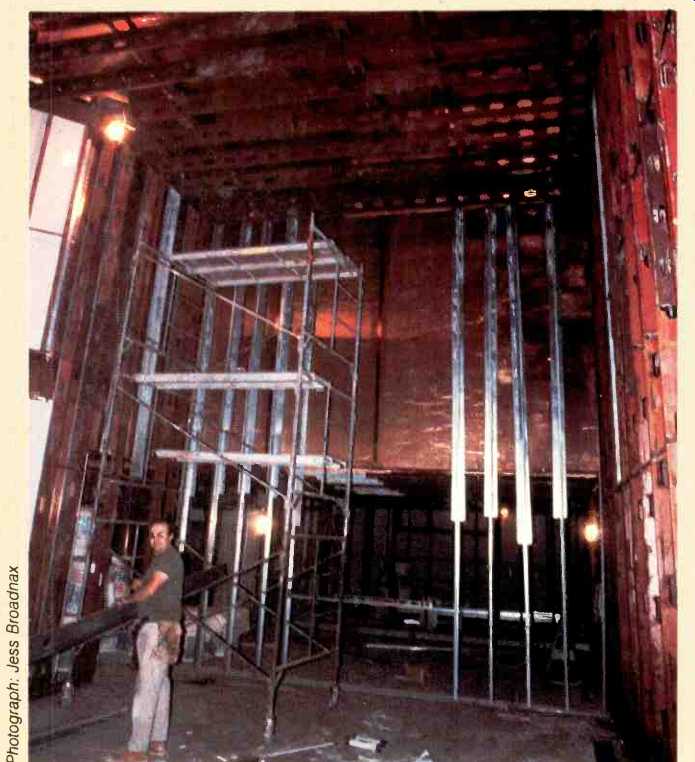
Fig. 1--Each room in WFMT's new studio complex (shown here under construction)
is built as a box on its own concrete slab, floating on rubber springs. Note
the copper screening surrounding the entire complex.
To reduce the nonuniformity of standing waves at lower frequencies, room proportions must be carefully controlled. A technique frequently employed is the use of nonparallel walls. However, it can be shown mathematically that nonparallel walls shift standing waves only about one third octave lower in frequency in most cases-seldom justifying the ensuing difficulty in room layout. At WFMT, walls are parallel except where interrupted by beam and column housings and equipment racks.
Standing waves in a rectangular room are governed by a simple equation:

where c = velocity of sound; I, w, and h are the length, width, and height of the room; the "n"s are the mode numbers, the lowest mode number (n = 1) representing the lowest frequency resonance appearing due to that dimension, and higher "n"s representing higher frequency resonances.
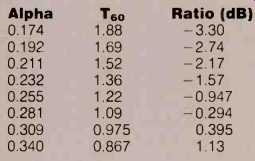
Table I-Range of absorption coefficients (alpha), reverberation times (T60),
and early-to-late ratios observed in a 3,000 cubic-meter recital hall.
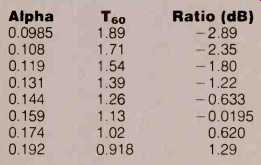
Table II-Range of absorption coefficients for WFMT main studio to match
the early-to-late ratios of the recital hall in Table I.
To calculate the frequency of a standing wave along one axis of the room, one sets the "n" values for the other two axes to zero. For example, if n1 = 1 and the others are zero, the formula will yield the lowest frequency standing wave along the length of the room. When two terms are non zero, the formula measures oblique standing waves, parallel to one of the walls but at an angle to the other two.
When all three are non-zero, the standing waves are tangential, that is, they are never parallel to any of the walls and bounce about all six walls billiard-ball style. To obtain uniformity, the tangential waves are most desirable, the oblique next, and the axial waves least desirable. Thus, by using this equation, one can ad just room dimensions to give the most even spacing of axial standing waves together with a preference for tangential waves, thereby providing the greatest uniformity in frequency.
Nevertheless, even with the best-proportioned room, there will be a frequency below which there will be no resonances, making the production of sound difficult for most instruments. That frequency will be determined by the longest dimension of the room. In addition, there will be a frequency below which there will only be a few widely spaced resonances, making production of sound between them difficult. That frequency will be determined by the shortest dimension of the room. To provide a room that can be used sufficiently low in frequency for piano and chamber music, the minimum dimension, usually the height, has to be at least 14 feet, in contrast to the 8-foot ceiling usually available in office buildings.
Thus, it was necessary that WFMT find a site in a desirable location where two stories could be acquired for the main studio, with sufficient ad joining space for the three control rooms, three production rooms and two other studios to be properly pro portioned and located around it. The site finally selected is located at the junction of two three-level roadways, next to one of Chicago's busiest expressways, along the barge entrance to the Chicago River and the terminus for the Illinois Central Gulf Railroad.
The available 8th and 9th floors of the building are in the direct path of a lobe from the principal commercial television antenna, providing an r.f. level that could peg a VU meter.
The result is that the WFMT studios are built in enclosures which are heavily shielded both from sound and vibration and from electromagnetic radiation up to 2 gigahertz (Fig. 1).
The background noise levels achieved by making every room a box floating on its own suspension are better than Noise Criterion Curve 15 (the lowest curve specified ac cording to one common architectural standard), corresponding to levels of about 17 dB SPL, A-weighted.
To achieve sound field uniformity in the individual rooms, a variation of an older technique, scattered absorption, is used. In this technique, various-sized absorption panels are placed on the walls and ceiling of the room. The total number, sizes, and types of panels are determined by the analysis of early-to-late ratios, earlier described. The panels are not randomly scattered, in the conventional fashion. Instead, they are placed by means of a computer-aided analysis which locates the last reflection for a beam of sound as it travels from the source to the receiver. Last reflection points are calculated using all combinations of left-speaker positions to console-operator positions plus right-speaker positions to operator positions. Additional combinations of probable listening positions are also calculated. Because the rooms are used for announcing, reflections are calculated for announcers as sources and microphones as receivers, so all points yield a matrix of locations on all surfaces over which panels are placed (Fig. 2). Thus, the reflected sound that is attenuated is only that which has had room coloration and confusing directional cues added to it.
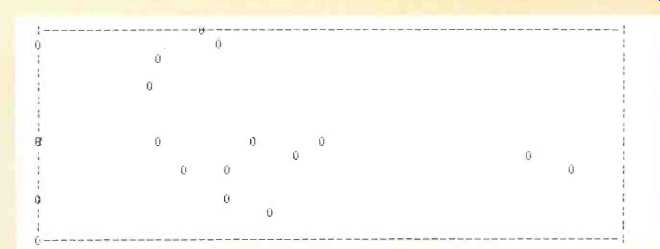
Fig. 2--A plot of final reflection points on a studio wall, for a single
source and receiver.
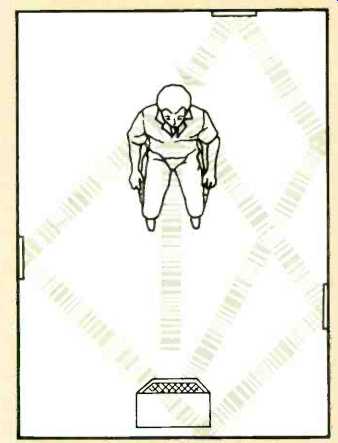
Fig. 3--Absorption panels are placed at the points where sound rays last
encounter surfaces before reaching the listener.
In some ways this approach resembles the fashionable technique of using absorption at the loudspeaker end of the room and diffusion at the listening end, in that the shorter path, higher level sound rays encounter absorption (Fig. 3). However, it is less susceptible to the spectral colorations varying front walls and the directional confusion of the relatively unvarying reflective rear walls. It also better accommodates unavoidable obstructive features, such as control-room windows and equipment racks, which may be factored into the placement of sources and receivers.
The result (Fig. 4) is a Mondrian esque array of panels and frames, both sonically and aesthetically pleasing. However, the probable positions of sources and microphones cannot be easily determined in the main studio. Instead, a means is provided for varying the number and positions of panels as well as their reflective characteristics (Fig. 5). Thus, the acoustics have been optimized for performances which may vary from single pianists to 21-piece string ensembles.
This approach to the acoustical de sign has made possible a production-oriented layout of rooms, centered equally around the on-the-air control room and the main studio; it is well suited to WFMT's dual function as a broadcaster of live and recorded fine-arts material of high sonic quality and as a syndicator of such material to other stations throughout the world.
-D.O.
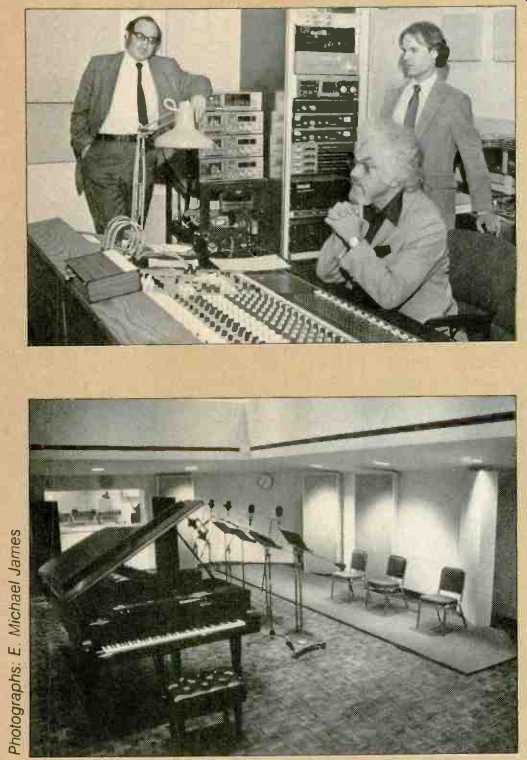
(top) Fig. 4--WFMT's Control Room C. The apparently random array of acoustic
panels carefully calculated. Author Queen is at left, WFMT Assistant Production
Director Larry Rock at right, with visitor Bob Berkovitz (then Research Director
of Acoustic Research) at the Neotek console.
(above) Fig. 5--WFMT Studio One. Note the adjustable absorber panels. The panels are rotated to vary the absorption-vs.-frequency curve.
Additional panels, full studio height, can be placed as needed, on barely visible runners. The soffit shown spans most of two walls and houses support beams and the ventilation muffler system.
===================
(adapted from Audio magazine, Feb. 1983)
= = = =
Also see:
Nine Stations--One Antenna (Jan. 1987)